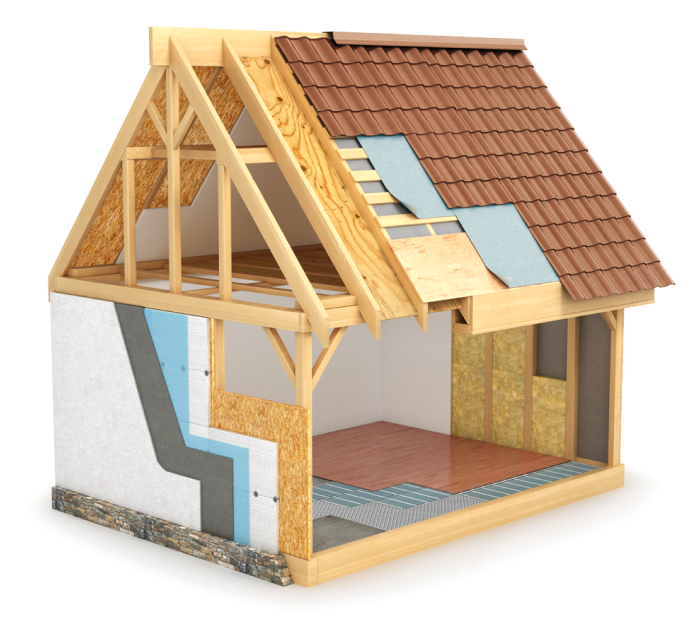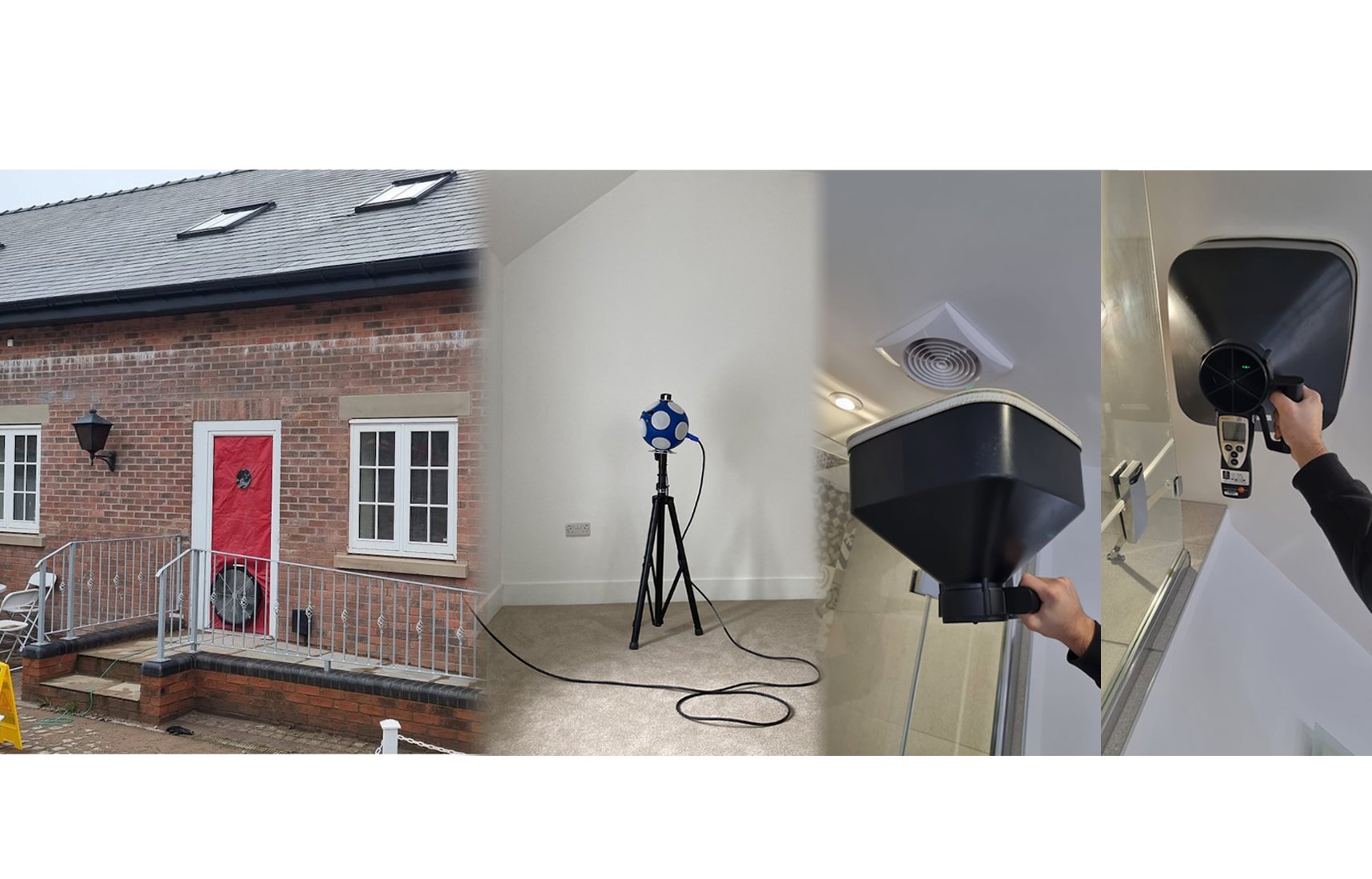BRNT-UK aims to provide a total construction acoustic testing solution. BRNT-UK pride ourselves on our positive client feedback, we can provide trade references for every sector of work and aim for 100% client satisfaction every time. Our testing method is proven by over 1000 tests since our establishment and follows a strict and exhaustive quality procedure. All our equipment is calibrated to UKAS standards.
Read More Check our FAQs for quick answers to frequently asked questions we receive.
If you have other questions write.
- I need to comply with Building Regs Part L, which test do I need?
-
To comply with Building Regs Part L, you would require an air pressure test to check for leakage of air coming through the fabric of your building. A SAP assessor will normally provide a Design Air Permeability (DAP) target that needs to be achieved during the test. The result will be fed back into your SAP calculation to both comply with Part L and to generate your design EPC.
- I need to comply with Building Regs Part F, which test do I need?
-
To comply with Building Regs Part F, you would require a ventilation test. A ventilation test checks the flow rates of extractor fans including in bathrooms, utility rooms and kitchens.
- What is an air test?
-
An air test checks for air leakage in the envelope of your building (e.g., air flow from the inside to outside and vice versa). We do this by placing a large fan into an opening (normally a doorway), which depressurises the building and using a gauge to measure the air flow. Multiple readings are taken at differing air pressures to assess the air permeability. Air tests are also known as air tightness tests, air permeability tests, air pressure tests and air leakage tests. All these tests are the same thing and are required to meet Part L Building Regs.
- What do I need to provide for an air test?
-
For an air tightness test our engineers need to complete some calculations on the size of your property prior to testing. For this we would require a copy of as built drawings for the property. We also need to know what the Design Air Permeability target is from your SAP (or just have a copy of the SAP) so we know what result you need to achieve.
- What do I need to do before an air test?
-
We can send you a checklist showing what you need to do prior to an air permeability test. Air tests check for air leakage, so the most important thing you can do prior to testing is check that there are no holes through to the exterior envelope of the house. These most often occur in bathrooms and kitchens around plumbing pipework. If you have an MVHR system, you will also need to switch this off and seal.
- Do I have to have a consultancy before a sound insulation test?
-
No, if you have completed your project and just require a sound test to complete sign off, we are more than happy to do this. If you are starting your project, and need some guidance to ensure you will meet your requirements for Part E Building Regs, we can undertake either a pre-commencement sound test of the as existing building or provide a consultancy and acoustic design to help with your construction.
- Does MVHR need to be commissioned?
-
As MVHR becomes more common, it is now increasingly being installed as part of electrical contracts. Correctly commissioning your MVHR installation can make a massive difference to the effectiveness and running costs of your system. Our engineers can complete both initial commissioning and yearly servicing (including filter changes and rebalancing) to keep your system running smoothly.
- I need to comply with Building Regs Part E, which test do I need?
-
To comply with Building Regs Part L, you would require a sound insulation test. This can either be in the form of a party wall sound test to check the noise transfer between two adjacent properties or a party floor sound test to check the noise transfer between two properties above and below each other (e.g., flats or a flat above a shop etc). Sometimes, both a party wall and party floor sound test are required.
- What is a sound test?
-
A sound insulation test checks for noise or sound transfer between two properties. This can either be on a party wall or a party floor. We complete sound tests using a specially designed speaker and a gauge to measure the sound transfer between buildings.
- What do I need to do before a sound test?
-
We can send you a checklist showing what you need to do prior to a sound test. This mainly shows the build stage at which a sound test should be undertaken. There are not really any specific things that need to be done just for the sound insulation test.
- What do I need to provide for a sound test?
-
Prior to visiting site to complete the sound insulation test, we need to know the layout of the building so we can assess the number of tests required. We also you to make sure that we have access to any adjacent buildings as required and a power supply. Sound testing is quite noisy, so we would recommend any residents are not at home at the time!
- What is a ventilation test?
-
A ventilation test measures the mechanical extract flow rate of your extractor fans (e.g., the suction power) to ensure they are good enough to remove damp air and smells from your property. We have a special gauge and hood that isolates the vent and measures the fans flow rate.
- What do I need to provide for a ventilation test?
-
We just need to know how many mechanical extract vents you have that need testing and their locations. These need to all be fitted, functioning, and externally ducted prior to our test engineer visiting.
- What do I need to do before a ventilation test?
-
All you need to do before a ventilation test is make sure all the vents are fitted, functioning and externally ducted. We would highly recommend keeping ducting runs as short as possible and using rigid ducting for as much of the runs as you can as this will mean your vents are the most efficient.
- What happens if my test fails?
-
Our engineers are highly experienced at both testing and coming up with solutions to help you pass. We don’t rush off from site leaving you in the lurch. If small remedial works can achieve a pass, our engineers will stay on site while you complete these and retest immediately to try and get you a pass on the day. If further works are required, our team will give you guidance on what needs to be done and arrange a revisit as soon as these are completed. We really want you to get the best outcome, so we will do what we can to assist.

For More Information About Our Services
Get In Touch
Email: info@brnt-uk.com & Phone: 01743 540260



We have developed our services to offer a full range of compliance testing including sound testing, air testing and ventilation testing. To date, we completed thousands of tests across both commercial and residential properties.



